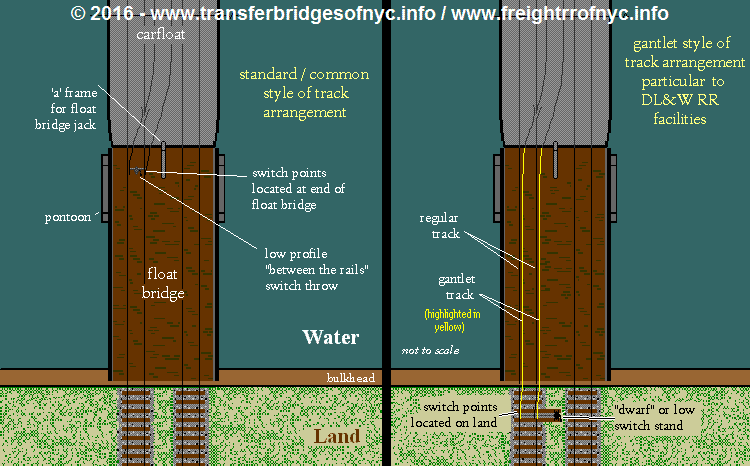-
Posts
6,237 -
Joined
-
Last visited
Content Type
Profiles
Forums
Gallery
Events
Everything posted by Canute
-
I got waylaid with other projects and this went on a back burner. I do have the bitts installed, but must still paint the chocks. And I did acquire some items for deck loading. Those will need some paint and fine wire details. I also purchased a 3' long car float kit, but I have to perform surgery to the deck to get it to mate with my float bridge. Rails to the single track don't line up. The gantlet track is fine. The car floats have 3 tracks on them, but the float bridges have a novel way of conserving space for these approach tracks from the land to the barge. My railroad, the Lackawanna, used the right side of the diagram.
-

MRAP ATV by CDW - FINISHED - Rye Field - 1:35 Scale
Canute replied to CDW's topic in Non-ship/categorised builds
Bull's eye! -

MRAP ATV by CDW - FINISHED - Rye Field - 1:35 Scale
Canute replied to CDW's topic in Non-ship/categorised builds
Hmm, I haven't built a tank in forever. 😲 -

MRAP ATV by CDW - FINISHED - Rye Field - 1:35 Scale
Canute replied to CDW's topic in Non-ship/categorised builds
It's an MRAP ATV with all those goodies. Imagine the Abrams TUSK kit they have. One version is a full interior. -

MRAP ATV by CDW - FINISHED - Rye Field - 1:35 Scale
Canute replied to CDW's topic in Non-ship/categorised builds
Yeah, really like a large moving map display. Extremely detailed. Is it a full detailed interior? -
Alclad makes lacquer based metallic paints in several different shades, but it's sprayed on. AK interactive also has a line, Xtreme metal paint, but it also is an airbrush product. I read their how to Here: http://www.ak-masters.com/ak/NEWSMARCH2015/XTREME_METAL.pdf It supports polishing and masking with good results, but it's a spray.
About us
Modelshipworld - Advancing Ship Modeling through Research
SSL Secured
Your security is important for us so this Website is SSL-Secured
NRG Mailing Address
Nautical Research Guild
237 South Lincoln Street
Westmont IL, 60559-1917
Model Ship World ® and the MSW logo are Registered Trademarks, and belong to the Nautical Research Guild (United States Patent and Trademark Office: No. 6,929,264 & No. 6,929,274, registered Dec. 20, 2022)
Helpful Links
About the NRG
If you enjoy building ship models that are historically accurate as well as beautiful, then The Nautical Research Guild (NRG) is just right for you.
The Guild is a non-profit educational organization whose mission is to “Advance Ship Modeling Through Research”. We provide support to our members in their efforts to raise the quality of their model ships.
The Nautical Research Guild has published our world-renowned quarterly magazine, The Nautical Research Journal, since 1955. The pages of the Journal are full of articles by accomplished ship modelers who show you how they create those exquisite details on their models, and by maritime historians who show you the correct details to build. The Journal is available in both print and digital editions. Go to the NRG web site (www.thenrg.org) to download a complimentary digital copy of the Journal. The NRG also publishes plan sets, books and compilations of back issues of the Journal and the former Ships in Scale and Model Ship Builder magazines.



